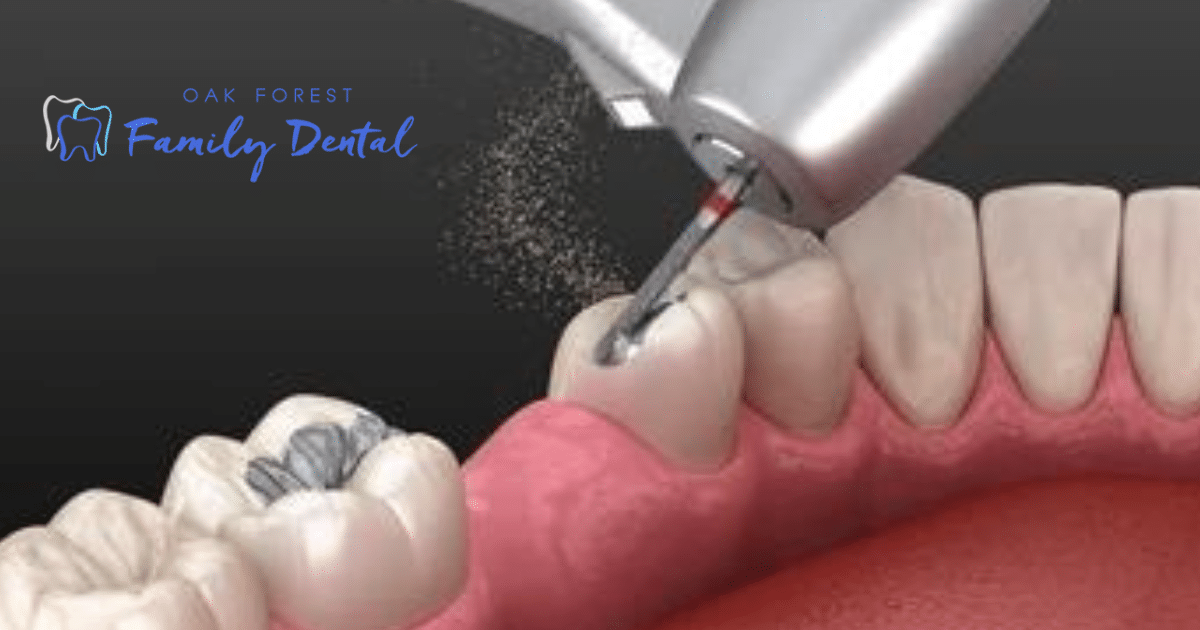Dental fillings are restorative dentistry used to replace decayed or damaged tooth structures. A decayed tooth will be empty inside. Dental fillings can be used to seal off the cavity and restore the tooth’s original shape and function. Reach out to Oak Forest dentist to get proper dental filling treatment. Below are given five kinds of dental fillings:
Five Types Of Dental Fillings
After removing a cavity, it is often filled with one of five different types of materials. You may not always be able to select the filling that best suits your needs, but knowing the options and their respective benefits and drawbacks is still helpful.
1. Amalgam Silver Fillings
Silver amalgam is a combination of silver, tin, zinc, copper, and mercury; the total weight of the amalgam is double that of the individual metal components. This filling style has gained the most notoriety in recent years. Oak Forest Dentists often use it for fillings since it is robust, long-lasting, and inexpensive.
The average lifespan of a silver amalgam filling is 12 years. Silver amalgam is also simple for an Oak Forest dentist to insert into a cavity and poses no risk of infection from contact with the patient’s blood or saliva.
There are some drawbacks to using silver amalgam. It would be a bad idea on a front tooth because it is unattractive. It’s linked to tooth cracking due to expansion and contraction. Cavities can occur again if food and germs become trapped between the filling and the tooth.
2. Composite Filling
Composite fillings are constructed of resin and plastic, molded to fit the cavity, and solidified by exposure to blue “curing” light. The fact that it may be made to blend in with the color of the patient’s natural teeth makes it a desirable alternative to the more noticeable silver amalgam.
The lifespan of composite fillings is significantly less than that of other materials. Every five to ten years, they wear out and must be replaced. Also, they cost more than a silver filling.
3. Ceramics Filling
As they are made of porcelain, they are long-lasting and lovely. Ceramic fillings are more expensive than other options, but they blend in with natural teeth and are less likely to discolor or wear down over time. Compared to composites, ceramic is more brittle; hence a more significant size is required to prevent breakage.
4. Glass Ionomer
Fillings made of glass and acrylic are safe for youngsters because their teeth are still developing. They disperse fluoride, which helps prevent additional tooth decay.
They break or wear out after a few years since they are weaker than composite resin. The tooth color of composite resin can be more precisely matched than that of traditional glass ionomer.
5. Gold Filing
Gold fillings are expensive and uncommon. Dentists in Oak Forest who provide gold fillings are rare. They require multiple visits to the dentist’s office. A gold filling can last for 20+ years because it’s strong, noncorrosive, and durable.
Broken or damaged teeth and teeth that have worn down from habits like teeth grinding, nail-biting, etc., can be restored with dental fillings. Visit Advanced Solutions Family Dental in Oak Forest, Illinois, for thorough dental care, including filling replacement.

